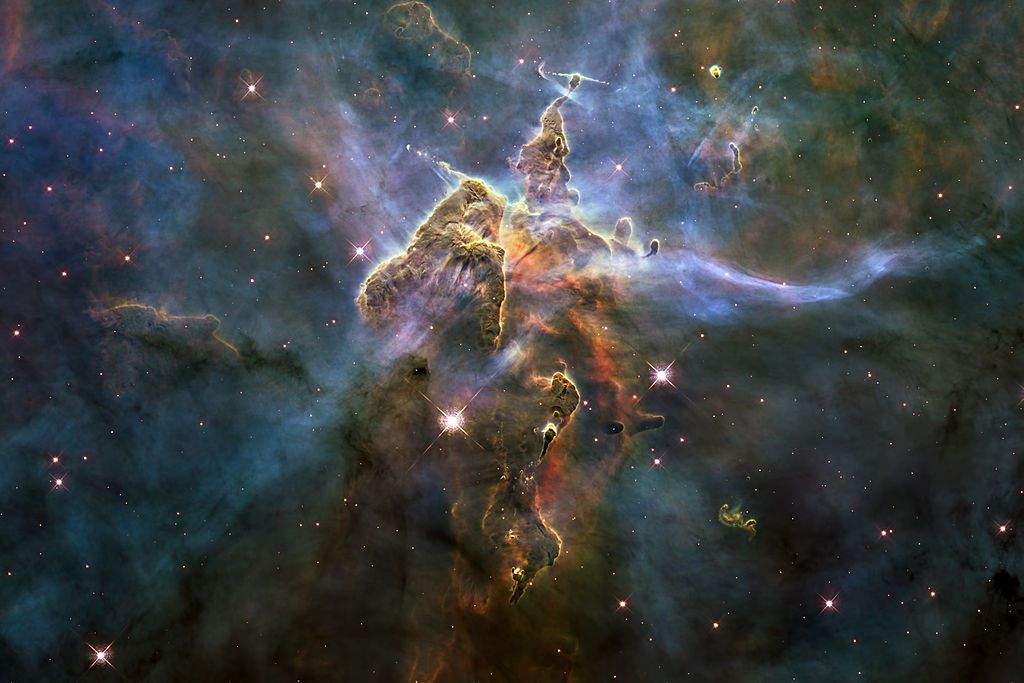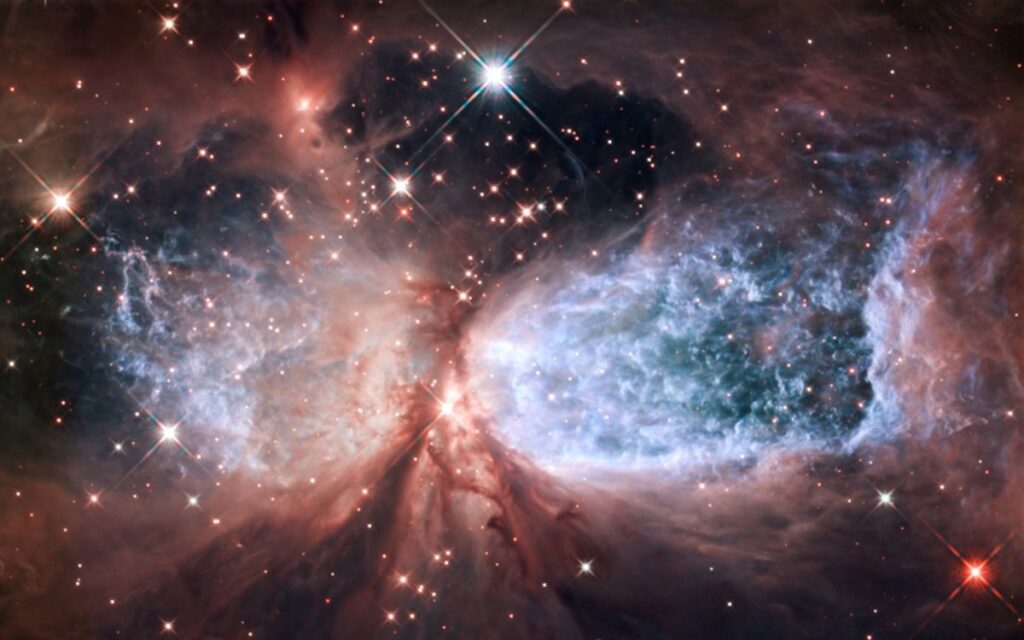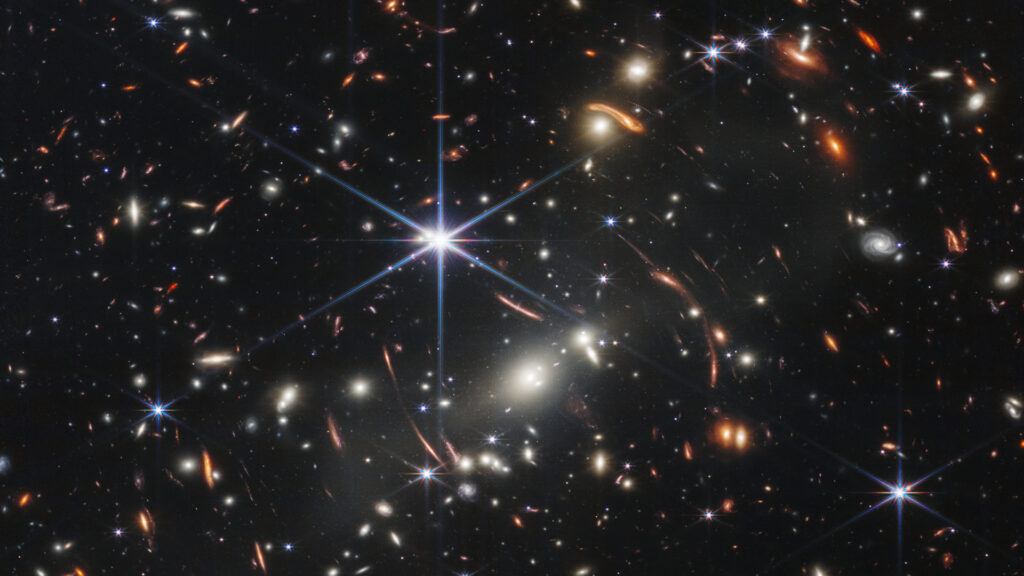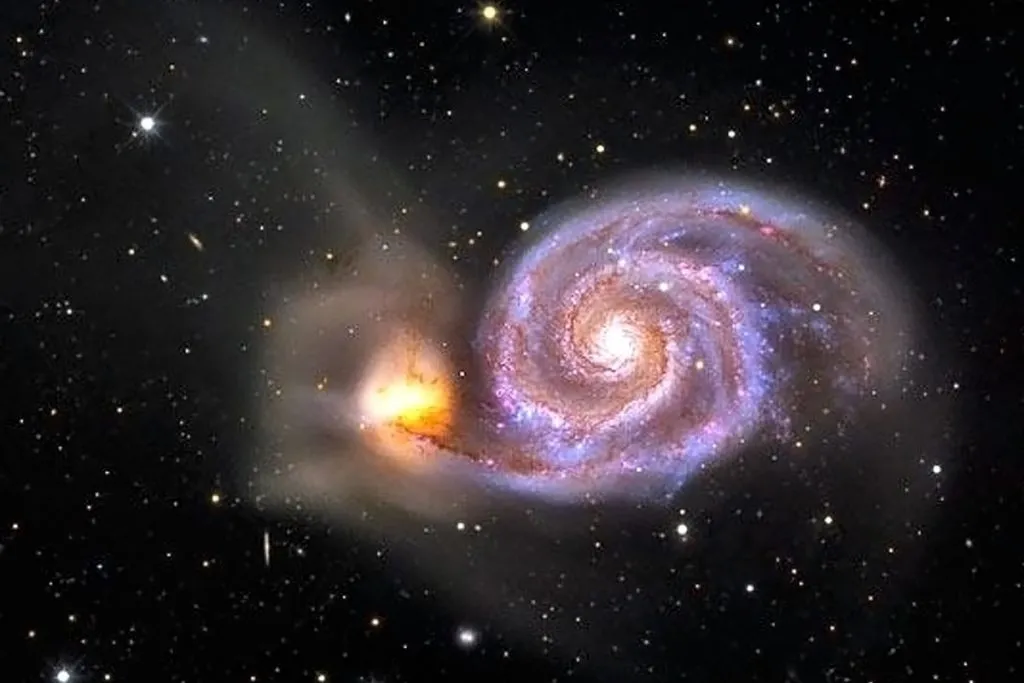Astronomy and astrophysics are closely related but have distinct focuses. Astronomy primarily involves observing and theorizing about celestial bodies like stars, planets, and galaxies, studying their properties and interactions. It focuses on understanding the universe’s structure and evolution.
On the other hand, astrophysics delves deeper into the physical and chemical properties of celestial objects and the underlying laws governing them. It investigates processes like nuclear reactions in stars, gravitational interactions, and the emission of electromagnetic radiation.
Astronomy focuses on observation and theory, while astrophysics uses mathematical models, simulations, and experiments to explore the fundamental physics of the universe.
What is Astronomy?

Astronomy is the scientific study of celestial objects such as stars, planets, comets, galaxies, and phenomena that originate outside the Earth’s atmosphere. It encompasses a wide range of topics including the formation and evolution of galaxies, as well as the birth and death of stars.
It also covers the structure and dynamics of planetary systems and the behavior of celestial bodies under the influence of various physical forces.
It is one of the oldest sciences, dating back thousands of years.
Moreover, it has contributed significantly to our understanding of the universe and our place within it. Modern astronomy relies on advanced technologies such as telescopes, space probes, and computer simulations to gather data. These tools help analyze the vast amounts of information available from across the cosmos.
What Is Astrophysics?
Astrophysics is like the scientific detective work of the universe. It’s a branch of astronomy that focuses on understanding the physical properties and behavior of celestial objects and phenomena. Astrophysicists study things like the formation and evolution of stars, galaxies, black holes, and the large-scale structure of the universe.
They use physics principles to explain the various phenomena observed in space, such as gravity, electromagnetism, and nuclear reactions. Astrophysicists apply these principles to answer big questions about the universe. They explore how stars are born and die, what causes galaxies to form and move, and what the universe is made of.
It is like trying to understand the laws of the universe. It involves studying the amazing things in space and figuring out how they work.
Top Difference Between Astronomy And Astrophysics

Let’s explore the fascinating realms of astronomy and astrophysics. While they share common ground, they diverge in their approaches and areas of focus. Here’s a concise comparison:
| Aspect | Astronomy | Astrophysics |
| Focus | Observational and theoretical study of celestial bodies, their properties, and interactions | Physical and chemical properties of celestial objects, their behavior, and underlying physical laws |
| Methods | Utilizes observational techniques, data analysis, and theoretical modeling | Relies on mathematical and theoretical modeling, computational simulations, and experimental observations |
| Subfields | Cosmology, planetary science, stellar astronomy, galactic astronomy | Stellar astrophysics, galactic astrophysics, high-energy astrophysics, cosmology |
| Interdisciplinary Connections | Interacts with physics, chemistry, geology, and biology | Strongly connected to physics, collaborates with mathematics, chemistry, and computer science |
| Research Areas | Studies celestial bodies, their formation, evolution, and interactions | Investigates physical processes occurring in celestial objects, such as nuclear reactions, gravitational interactions, and electromagnetic radiation |
| Technological Applications | Involves developing telescopes, space probes, and instruments for observing and studying celestial objects | Utilizes advanced technologies, such as particle accelerators, detectors, and computational methods, to explore celestial properties |
Astronomy
Focus
Astronomy primarily focuses on the observational and theoretical study of celestial bodies, such as stars, planets, galaxies, and their interactions. This involves observing these objects through telescopes and other instruments, as well as developing theories to explain their behavior and properties.
Methods
Astronomers use a variety of methods in their research. Observational techniques involve collecting data from telescopes, satellites, and other observatories. Data analysis techniques are then applied to interpret and understand the observations.
Additionally, theoretical modeling is used to develop mathematical frameworks and simulations to explain astronomical phenomena.
Subfields
Astronomy encompasses several subfields, including:
- Cosmology: the study of the origin, evolution, and eventual fate of the universe as a whole.
- Planetary science: the study of planets, moons, and other objects in our solar system and beyond.
- Stellar astronomy: the study of stars, including their formation, evolution, and properties.
- Galactic astronomy: the study of galaxies, their structure, dynamics, and evolution.
Interdisciplinary Connections
It interacts with various scientific disciplines. Physics is closely related, as many astronomical phenomena are governed by physical laws. Chemistry is important for understanding the composition of celestial bodies. Geology plays a role in studying planetary surfaces and interiors. Biology is relevant in the search for extraterrestrial life.
Research Areas
Astronomers study a wide range of topics related to celestial bodies. This includes investigating how stars and planets form, how they evolve over time, and how they interact with each other and their environments. Understanding these processes can provide insights into the origins and evolution of the universe.
Technological Applications
It drives the development of advanced technologies for observing and studying celestial objects. This includes the design and construction of telescopes, both ground-based and space-based, as well as instruments such as cameras, spectrographs, and detectors. Space probes and satellites are used to explore distant objects in our solar system and beyond.
Technological advancements enhance our understanding of the universe and have practical uses in communications, navigation, and imaging technologies.
Astrophysics

Focus
It concentrates on studying the physical and chemical properties of stars, galaxies, black holes, and the entire universe. It seeks to uncover the underlying physical laws that govern the behavior of these objects and the processes that occur within them.
Methods
Astrophysicists employ a variety of methods in their research. Mathematical and theoretical modeling is used to develop equations and frameworks that describe astrophysical phenomena.
Computational simulations allow researchers to explore complex systems and simulate scenarios that may not be feasible to observe directly. Experimental observations are crucial for testing theories and validating models, often conducted using telescopes, satellites, and other observational instruments.
Subfields
Astrophysics is divided into several subfields, each focusing on different aspects of celestial objects and phenomena:
- Stellar astrophysics: the study of stars, including their formation, evolution, and death.
- Galactic astrophysics: the study of galaxies, their structure, dynamics, and evolution.
- High-energy astrophysics: the study of energetic phenomena such as supernovae, gamma-ray bursts, and black holes.
- Cosmology: the study of the origin, evolution, and large-scale structure of the universe.
Interdisciplinary Connections
Astrophysics is strongly connected to physics, as it applies principles of physics to understand astronomical phenomena. Collaboration with mathematics is essential for developing theoretical models and solving complex equations.
Chemistry helps understand celestial compositions, whereas computer science aids in creating computational methods and analyzing extensive datasets.
Research Areas
Astrophysicists investigate a wide range of physical processes occurring in celestial objects, including nuclear reactions powering stars and gravitational interactions shaping galaxies. They also study the emission of electromagnetic radiation across the universe.
Research in astrophysics examines phenomena on the smallest scales, including the behavior of particles within stars. It also covers the largest scales, such as the expansion of the universe.
Technological Applications
Astrophysics drives the development of advanced technologies to explore and study celestial properties. This includes the use of particle accelerators to simulate high-energy processes and detectors to capture signals from distant objects. Computational methods are also used to analyze vast amounts of data.
Technological advancements expand our cosmic knowledge and benefit materials science, medical imaging, and telecommunications, among other fields.
FAQ’s
What is better, astronomy or astrophysics?
Choosing between astronomy and astrophysics depends on your interests and career goals. Astrophysics uses physics and chemistry to explore celestial objects’ composition and behavior, whereas astronomy identifies and catalogs these objects. Both fields contribute significantly to our understanding of the universe.
Is astrophysics the same as astronomy?
No, Astrophysics is a subdiscipline of astronomy, essentially, which combines physics and astronomy. While astronomy primarily maps the positions and movements of astronomical objects, astrophysics uses the laws of physics to describe and explain their nature.
Is astronomy a branch of astrophysics?
No, Astrophysics is actually a branch of astronomy. Astronomy is the broader field that encompasses the study of celestial objects. Astrophysics uses physics and chemistry principles to study the nature of celestial objects, beyond merely their positions or movements in space.
Final Words
Astronomy looks at stars and planets and how they interact, while astrophysics digs deeper into what they’re made of and how they work. Both help us understand the big picture of the universe but in slightly different ways.
Think of astronomy as the big view, and astrophysics as zooming in to see the tiny details. They work together like two sides of the same cosmic coin, helping us unlock the mysteries of the universe. From distant galaxies to the twinkling stars above, their collaboration is crucial.
